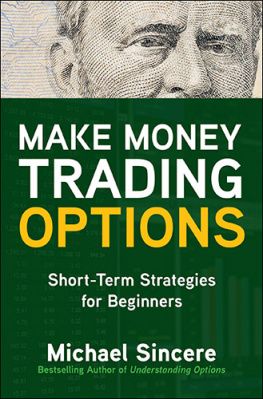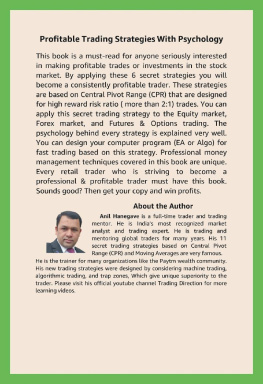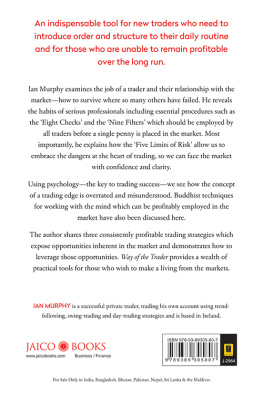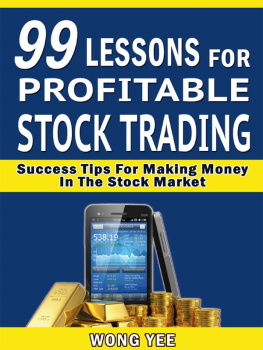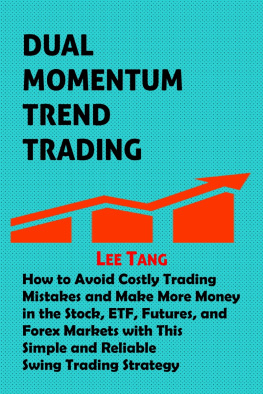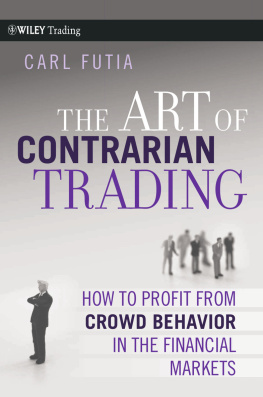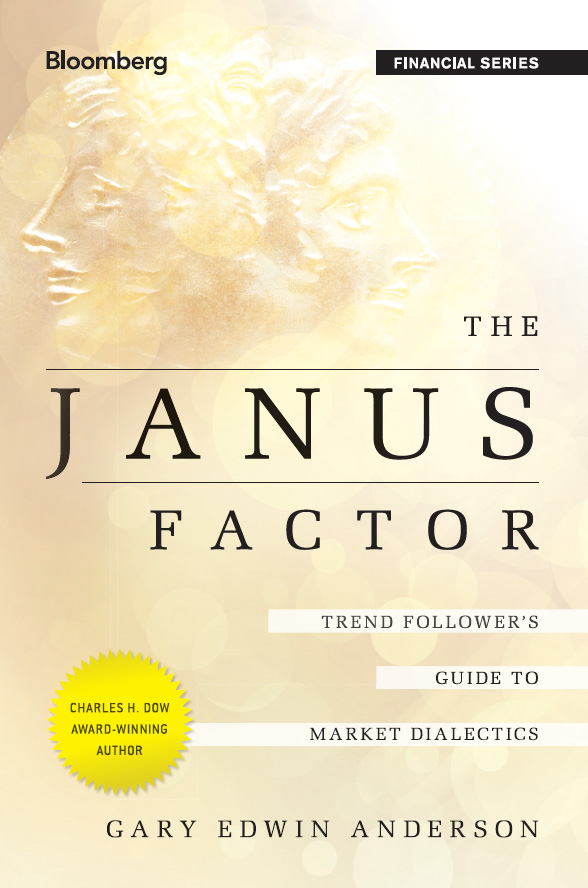Contents
Since 1996, Bloomberg Press has published books for financial professionals on investing, economics, and policy affecting investors. Titles are written by leading practitioners and authorities, and have been translated into more than 20 languages.
The Bloomberg Financial Series provides both core reference knowledge and actionable information for financial professionals. The books are written by experts familiar with the work flows, challenges, and demands of investment professionals who trade the markets, manage money, and analyze investments in their capacity of growing and protecting wealth, hedging risk, and generating revenue.
For a list of available titles, visit our Web site at www.wiley.com/go/bloombergpress .

Cover Design: C. Wallace
Cover Images: Roman Coin Claudiodivizia/ Dreamstime.com ,
Golden Background Vizualbyte/iStockphoto
Copyright 2012 by Gary Edwin Anderson. All rights reserved.
Published by John Wiley & Sons, Inc., Hoboken, New Jersey.
Published simultaneously in Canada.
No part of this publication may be reproduced, stored in a retrieval system, or transmitted in any form or by any means, electronic, mechanical, photocopying, recording, scanning, or otherwise, except as permitted under Section 107 or 108 of the 1976 United States Copyright Act, without either the prior written permission of the Publisher, or authorization through payment of the appropriate per-copy fee to the Copyright Clearance Center, Inc., 222 Rosewood Drive, Danvers, MA 01923, (978) 750-8400, fax (978) 646-8600, or on the Web at www.copyright.com . Requests to the Publisher for permission should be addressed to the Permissions Department, John Wiley & Sons, Inc., 111 River Street, Hoboken, NJ 07030, (201) 748-6011, fax (201) 748-6008, or online at www.wiley.com/go/permissions .
Limit of Liability/Disclaimer of Warranty: While the publisher and author have used their best efforts in preparing this book, they make no representations or warranties with respect to the accuracy or completeness of the contents of this book and specifically disclaim any implied warranties of merchantability or fitness for a particular purpose. No warranty may be created or extended by sales representatives or written sales materials. The advice and strategies contained herein may not be suitable for your situation. You should consult with a professional where appropriate. Neither the publisher nor author shall be liable for any loss of profit or any other commercial damages, including but not limited to special, incidental, consequential, or other damages.
For general information on our other products and services or for technical support, please contact our Customer Care Department within the United States at (800) 762-2974, outside the United States at (317) 572-3993 or fax (317) 572-4002.
Wiley also publishes its books in a variety of electronic formats. Some content that appears in print may not be available in electronic books. For more information about Wiley products, visit our web site at www.wiley.com .
Library of Congress Cataloging-in-Publication Data :
Anderson, Gary Edwin, 1942
The Janus factor : trend followers guide to market dialectics / Gary Edwin Anderson.
p. cm.
Includes index.
ISBN 978-1-118-08707-7 (cloth); ISBN 978-1-118-23600-0 (ebk);
ISBN 978-1-118-26169-9 (ebk); ISBN 978-1-118-22348-2 (ebk)
1. Speculation. 2. Investment analysis. 3. Investments. I. Title.
HG6015.A526 1012
332.64dc23
2012030690
For
Carol Anne
The Janus Factor
Janus: Early Roman god of gates and portals, suggesting the two sides of a door. Represented by two opposing faces, Janus symbolizes the two-sided nature of things.
Introduction
In this Discourse I do not undertake to say all that is known, or may be said of it, but I undertake to acquaint the Reader with many things that are not usually known to every Angler; and I shall leave gleanings and observations enough to be made out of the experience of all that love and practise this recreation, to which I shall encourage them. For Angling may be said to be so like the Mathematicks, that it can never be fully learnt; at least not so fully, but that there will still be more new experiments left for the trial of other men that succeed us. But I think all that love this game may here learn something that may be worth their money, if they be not poor and needy men: and in case they be, I then wish them to forbear to buy it; for I write not to get money, but for pleasure, and this Discourse boasts of no more, for I hate to promise much, and deceive the Reader .
Izaak Walton, The Compleat Angler , 1653
This book embraces both theory and craft. In the first five chapters, I present a systematic view of the market, not as a battle between buyers and sellers, or even between bulls and bears, but as a struggle for dominance by traders holding to radically opposed paradigms. A new measure of risk is offered, and on that theoretical foundation I build a method.
Craft confronts a real world of noisy data and thorny reality, so in the remaining six chapters I apply these methods to the historical record. In the final three I detail strategic indicators, which readers may use to guide day-to-day trading decisions.
Some of what I demonstrate is, so far as I know, taught nowhere else. The main ideas presented in this book are simple but crucial for anyone who wishes to trade successfully in all market environments.
Acknowledgments
Writing a book, I have come to learn, is a lonely pursuit, but a number of friends and colleagues cheered me along and some have contributed to the books content and finish.
First among those is my wife, Carol Anne. Her trust and support made it impossible for me to disappoint her. My friend and former business partner, Jack Loe, not only encouraged me, but his practical insights are sprinkled throughout the book.
There are others I wish to thank as well. Toni Turner is a successful author of books on trading, and from the beginning her natural optimism repeatedly refreshed me and my determination. I wish to thank Dr. Timothy Masters for his edits of technical issues, which have spared me from numerous small embarrassments. Nelson Freeburg lent his keen eye and broad knowledge of quantitative systems. David Aronson has been a friend of the project.
Finally, I wish to acknowledge those whose words and work I have borrowed freely.
To steal ideas from one person is plagiarism. To steal from many is research.
Wilson Mizner , 1938
Chapter 1
Foundations
Every autobiography is the fragment of a theory .
Leigh Gilmore, The Limits of Autobiography
The young meteorologist started his computer run and walked down the hall for a cup of coffee. When he returned, the direction of both his life and his science had radically shifted. Ed Lorenz was experimenting with models of the weather on an early desk-sized computer. His research project called for him to input variables for atmospheric conditions and then let the computer grind out future weather patterns according to well-established algorithms based on meteorological laws. On this occasion, he decided to repeat an earlier computation in order to examine longer-term output in more detail. Normally, the computer ran these calculations from beginning to end in one take, but to save time Lorenz decided to start nearer to the point of his interest rather than to redo the entire run. As initial conditions he typed in a line of numbers printed midway during an earlier computation, started the program, and left the room. His coffee break lasted about an hour.


